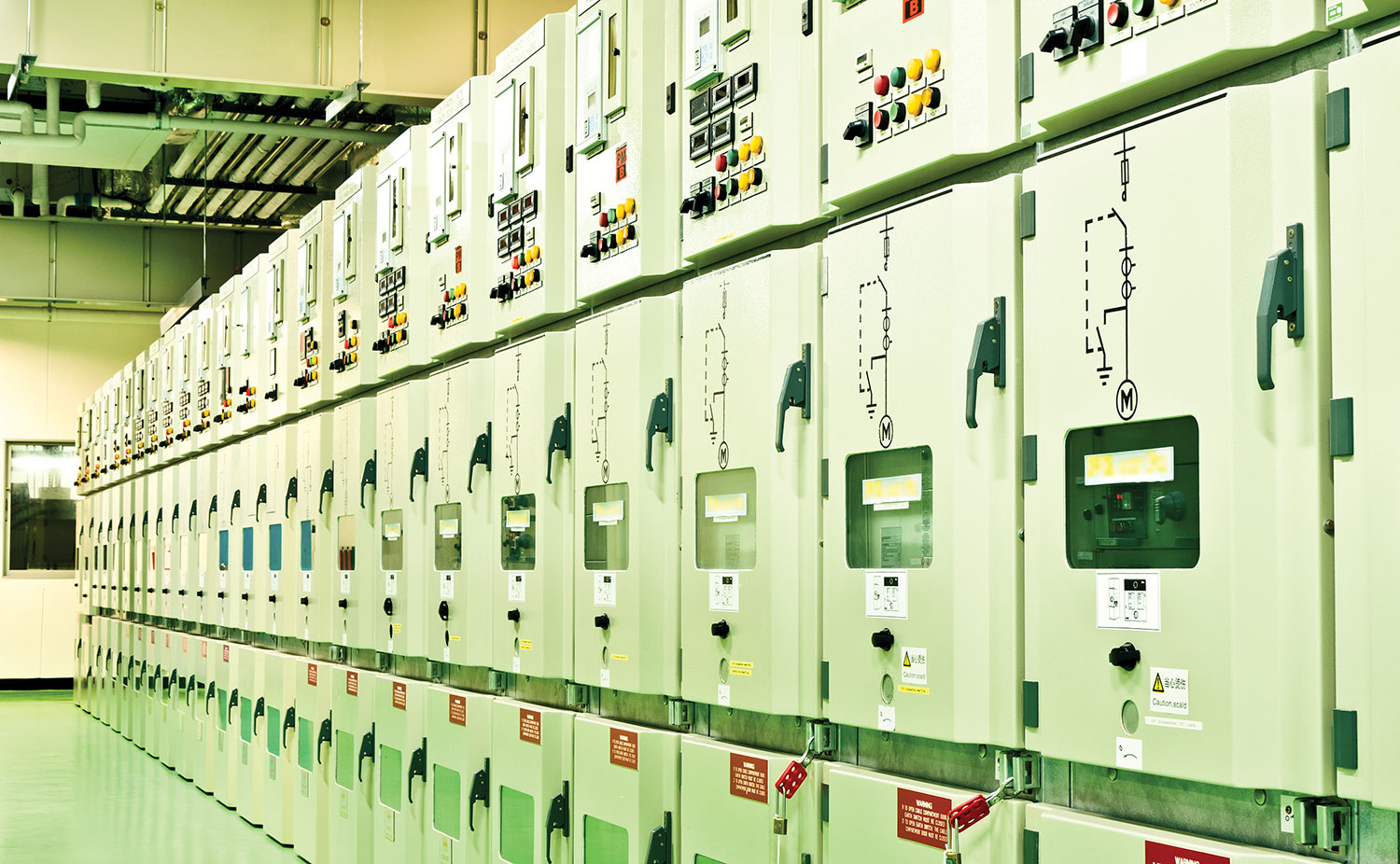This article provides a general overview of what to expect when completing a field evaluation of medium/high-voltage switchgear electrical distribution systems based on The Recommended Practice and Procedure for Unlabeled Electrical Equipment Evaluation (NFPA 791). It’s important to remember that the Field Evaluation Body (FEB), manufacturer, and Authority Having Jurisdiction (AHJ) must work together to understand the scope, limitations, and expectations of the evaluation. Overall, FEBs want to identify all potential hazards and assess whether or not the equipment complies with the standards selected for the evaluation.
Understanding the need for field evaluations of switchgear systems
If a manufacturer does not have a Nationally Recognized Testing Laboratory (NRTL) mark on the switchgear, a field evaluation of the equipment may be needed to properly assess its compliance with applicable standards. While most utility providers follow their own requirements and don’t require equipment to be on an approved product list, in some cases, a switchgear is customer-owned.
Many large power users are taking on the ownership of their electrical distribution systems, like a switchgear, which have been traditionally supplied by the local utility providers. With personnel safety and reliability of equipment top-of-mind, this shift to more customer-owned systems has led to many jurisdictions requiring a NRTL certification mark or evaluation label on the equipment before it’s energized.
Identifying applicable standards for your switchgear system
The field evaluation labeling process begins with an understanding of how to conduct the evaluation. NFPA 791 outlines recommended practices the FEB should follow when evaluating the unlabeled electrical equipment. While it is not mandatory to follow NFPA 791, it also provides AHJs with recommended practices for determining acceptance of a third-party evaluation report.
The FEB and manufacturer work to identify the appropriate standards based on design and application of the equipment to be evaluated. NFPA 791 section 4.3.2 states that the primary standard should be a nationally recognized standard. Institute of Electrical and Electronics Engineers (IEEE) standards are the most common ones used on medium/high-voltage switchgear applications. It is the manufacturers’ responsibility to prove to the FEB that the equipment meets the construction and test requirements according to the applicable standards.
If you are familiar with IEEE standards, you know they can be difficult to follow. You may need several IEEE standards to fully achieve the requirements needed to complete the evaluation for any given piece of equipment. For example, if you were looking at Metal-Enclosed Switchgear above 1000Vac; the construction requirements are found in IEEE C37.2.3, the definitions are found in IEEE C37.100 for all standards, the general requirements, tests, and test values are found in IEEE C37.100.1, and test procedures and practices are specified in the relevant standard or in IEEE Standard 4. Additionally, ANSI standards and IEC standards may also be referenced for meeting specific requirements in the IEEE standard you are working with.
Preparing for your field evaluation and inspection
You can complete design-type testing and production-type testing, carried out on similar equipment, as outlined in the IEEE standard for the specific type of switchgear. If the equipment does not meet these requirements, you may need to perform the testing with the FEB or an ISO/IEC 17025-accredited lab. Testing by the FEB is typically not practical at the final installation location due to test equipment requirements. This needs to be completed ahead of the inspection.
NFPA 791 outlines pre-visit preparation, stating that manufacturers must provide the following information to the FEB:
- Layout drawings.
- Electrical schematics for all systems.
- A complete bill of material, including certification details of critical components (e.g., load interrupter switches, air circuit breakers, fuses, arc chute breakers and any other protective or metering devices, insulating boards/material, surge arrestors, lightning arrestors) and limitations of acceptability of these components as to the standard they are certified to.
- Evidence that unmarked equipment complies with the necessary requirements for bearing an approval mark, such as a full descriptive test report for review.
Another pre-visit requirement is establishing contact with the local AHJ at the final installation location of the equipment prior to the field evaluation (NFPA 791 section 4.4). At this time, the AHJ can determine if they will accept the FEB label and raise any concerns about evaluating the equipment. The AHJ may require the field evaluation label to be applied onsite once the equipment is fully installed or they may accept a factory labeling of the equipment prior to installation. In this instance, AHJ feedback is paramount to a successful evaluation process.
Completing your field evaluation and inspection
During the field evaluation, common elements the FEB will inspect include:
- Bending Radius (entrance and field connection compartments must allow for adequate bending of the incoming cables) and specific requirements on service entrance compartments.
- Spacing (must comply with previously accepted under certification or witness testing which proves adequate spacing between phases and phase to ground), including dielectric voltage withstand, Impulse or BIL (above 15KV), and Corona discharge test, as applicable. (Refer to Clearances NEC Table 490.24 or “by type” testing per the IEEE standard.)
- Bus Support (specification of bus support components, accepted based on previous designs tested under certification).
- Short Circuit Current Ratings (witness testing or accepted based on previous designs tested and accepted under certification).
- Bus Ampacity (accepted based on 1000 amps per square inch up to 1200 Amps maximum or based on previously tested design).
- Enclosure (accepted based on previously tested and accepted under certification or witness the testing).
- Air-Insulated Bushing (specification sheets, evidence rated for the voltage, ampacity and short circuit ratings and pass the dielectric strength test where the bushings are contained within the equipment).
- Protection Devices (must be certified by NRTL marking, if not, to be reviewed by qualified personnel).
NFPA 791 outlines that during the post-inspection stage, the FEB must provide the manufacturer with a list of alterations needed to comply with the standard and receive the final field evaluation label. The FEB will present the report to the manufacturer, obtain the required signature, and will send the AHJ a copy of the report for review.
If required by the local AHJ, a final installation site inspection is completed and includes:
- Full examination of the site for adherence to design and installation site requirements, such as:
- No damaged parts
- Everything installed properly, alterations completed as discussed during the post-inspection stage
- No substituted parts
- Level ground, working space
- Testing: Basic Insulation Level test using High-Potential Dielectric Tester (Hi-Pot)
- Application of the field evaluation label and documentation of equipment serial number (no further modifications can be made after equipment has been labeled)
- Report completion and delivery to Licensed Professional Engineer for review
- Return of reviewed report to the manufacturer with any reviewer questions
- Presentation of final report to the manufacturer and the AHJ, which identifies the standards that were applied and the alterations that needed to be completed
While every installation is different and may require additional considerations, the goal of field evaluations like this is to properly assess whether or not the equipment complies with safety and performance standards, even if the equipment can’t be sent to a lab for testing. The efforts of the manufacturer, FEB, and AHJ to complete these evaluations also demonstrate increased attention towards providing safer work environments for employees working with or near these types of electrical distribution systems. Learn more about site inspections and field evaluations.















Find Us on Socials